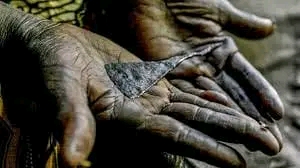By: Rosheedah Adedamola

It would be no exaggeration that Nigerians are blind to some atrocious, barbarous, and wild acts that are supposed to have been abolished, and eradicated from our culture. This includes the prominent bothersome acpt called the FEMALE GENITAL CIRCUMCISION/MUTILATION.
Though considered a traditional act of beautifying or keeping the female gender safe from Sex or other non-medical reasons, has done more harm than good than was presumed by the ancient people. Female genital mutilation is all procedures that involve partial or total removal of the external female genitalia, or other injury to the female genital organs for non-medical reasons.
The practice has no benefit for girls, and women and causes severe bleeding and urinating problems and later cysts, infection as well as complications in childbirth, and increased risk of newborn death.
Internationally, the practice of FGM is recognized as a violation of the human rights of girls and women. It reflects deep-rooted equality between the sexes and constitutes an extreme form of discrimination against girls and women. This practice also violates a person’s right to health, security, and physical integrity, the right to be free from torture and cruel, inhuman, degrading, and perhaps the right to life in some instances when the procedure results in death.
In this regard coupled with my research, it shows that this particular act sprung and became part of their lifestyle because of the absolute ignorance of ancient people on how devastating, horrendous, and obnoxious this act of FGM is. Prominent scholars have proposed three glaring functions of the act, The first draws from the theories behind ‘’Marriageability’’ of a woman, emphasizing the ideologies of ‘’Virginity’’ purity and sexual restraint, And that it increases human fertility, the ability to procreate, and child survival. In the religious arena, girls won’t be promiscuous and maintain their virginity till marriage. I can boldly say that it’s practically fallacious that people in the past believed that circumcision was the best way to enhance procreation, fertility, child survival and so more. Alas, “what a diabolical mindset”.
Interestingly, despite the graveness of this act, the practicing societies look at it as an integral part of tradition and cultural identity. In the majority of the cases, it has been documented that the family members such as parents, mainly mothers, grandparents, and grandmothers of the girls are the perpetrators of this act. Ensuring that the daughter’s virginity is a required task for them to arrange for her marriage, receive proper bride price, and for family honor.
Social conventions are so powerful that girls themselves may desire to be cut, as a result of the social pressure from peers and because of fear-not without reason-of stigmatization, and rejection by their communities if they do not follow the tradition.
The practice was forbidden under the national constitution and in conjunction with the influence on other African countries, Human Rights activists believe the 2015 federal ban in Nigeria will influence the other African countries.
However, the banning is not universal or fast enough, In some countries it remains stagnant as it is, way back three decades ago.
Over 90% of women and girls in Guinea and Somalia still undergo some form of genital cutting or circumcision.
Because female genital mutilation is a form of gender-based violence, we cannot address it in isolation from other forms of violence against girls and women.
To put a stop to female genital mutilation, we have to tackle the root causes of gender inequality and work for women’s social and economic empowerment.
At the national level, introducing national legislation that prohibits FGM/C can accelerate change most effectively when a process of societal change is already underway and citizens are sensitized to the issue.
It is important that the legislation introduced or be complemented by appropriate child protection, measures, comprehensive social support mechanisms, information, and awareness-raising campaigns that are dissuasive rather than punitive. Imposing sanctions alone runs the risk of driving the practice underground and having a very limited impact on behavior change.
At the regional level, Developing and adopting international legal instruments is also important for creating an enabling environment that can lead to support efforts and the abandonment of the practice.
Another way to put an end to this barbaric act is by Raising Awareness and promoting dialogue. Legislative measures are most effective when preceded by a range of broader policy measures, involving both general and focused awareness-raising and the promotion of dialogue within and among different groups
The media too can play an important role in “breaking the silence” around FGM/C and bringing the issue into the public realm.
Girls should be educated on their rights to decide what happens to their bodies after the procedure and speak about the risks and realities of FGM/C.
Locally, it is necessary to have religious leaders strike down the falsity that Female genital mutilation/cutting has a basis in the religion.
Creating an enabling environment to support the abandonment of FGM/C requires a strong commitment and policy actions on the part of the government to promote equal rights for girls and boys and for women and men. It also entails addressing FGM/C as a component of development programs and projects that promote poverty eradication, as well as gender equality, girls and women’s health, and Safe motherhood.
Conclusively, I believe that the headway to put a stop to FGM/C needs to be faster and stronger if the practice is to be eradicated, annihilated, and frozen out by 2030.
